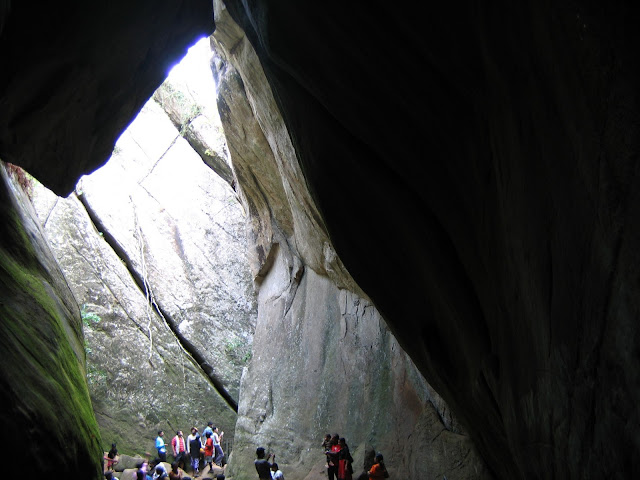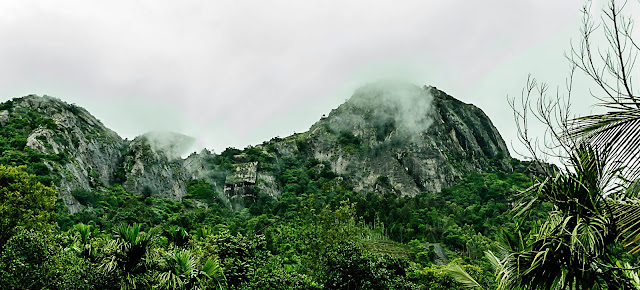The fascinating prehistoric rock etchings found on the walls of these caves have drawn the serious attention of archeologists and historians worldwide.
With at least three distinct sets of petroglyphs, the earliest thought to date back over 5000 years, it is assumed that the Edakkal caves had been inhabited at various stages in history.
The name “Edakkal” literally means “a stone in between”, and this describes how the cave is formed by a heavy boulder straddling a fissure in the rock. Inside the cave is on two levels, the lower chamber measures about 18 feet long by 12 feet wide and 10 feet high and can be entered through an opening of 5 x 4 feet. A passage opposite the entrance leads upward to a small aperture in the roof through which one climbs up to the next storey whose interior is about 96 feet long, 22 feet wide, and 18 feet high. Light enters the cave through a big gap at the right-hand corner of the roof where the boulder does not touch the facing wall.
The Colonial Discovery of the Caves
On a hunting trip to Wayanad in 1890, Fred- Fawcett, the then superintendent of police of the Malabar District, happened to see a Neolithic Celt (stone axe or chisel) recovered from the coffee estate of Colin Mackenzie. An enthusiast in prehistory, Fawcett made local enquiries and went round exploring the Wayanad high ranges. In the course of his rambles he was shown the Edakkal rock-shelter situated on the western side of Edakkalmala. He identified the site as a habitat of Neolithic (i.e. late Stone Age, c4000BC to c1700BC) people on the basis of the nature of representations on the cave walls, which appeared to him as engravings made of Neolithic Celts. It was an exciting discovery, as these were the first specimens of abraded drawings found in India.
Tribal Peoples & the Caves
Fawcett suggested the possibility that the carvings might have been the handiwork of Kurumbars (a tribal people of the Wayanad). He writes, "The curious reluctance of the Kurumbars to approach the Cave, combined with the simultaneous want of reverence for it both on the part of the Paniyas and the local Hindus, who are very small in numbers and not Iong resident in the Wayanad, might tempt one to hazard the theory as to the carvings being the handiwork of Kurumbars of a bygone day". Nevertheless he utters a word of caution as follows. "It should, however, be remembered that the Paniya is a particularly fearless individual while the Kurumbar is the reverse. The mere existence of the mysterious carvings in the silent, unfrequented cave would suffice to inspire the Kurumbar with a kind of awe and make him terrified to have anything to do with it” .
Legends of the Caves
The name Ambukuthimala is ascribed to the local legend which has it that the caves were formed by arrows fired by Lava and Kusha, the sons of Sri Rama, legendary hero of the Ramayana.Even today there are many who believe that Lord Rama killed Surpanakha, the sister of Ravana, in the narrow fissure at the southern end of Edakkal cave.
A local legend associates Kutti Chatan (the little devil of Malabar) with the goddess Mudiampilli, and until recently local people undertook an annual pilgrimage to the peak of the hill to perform a puja (ritual offering) in her honour.
Post Title
→Edakkal Caves, Wayanad, Kerala, India
Post URL
→https://anikspink.blogspot.com/2013/06/edakkal-caves-wayanad-kerala-india.html
Visit Aniks Pink for Daily Updated Wedding Dresses Collection


















0 comments:
Post a Comment